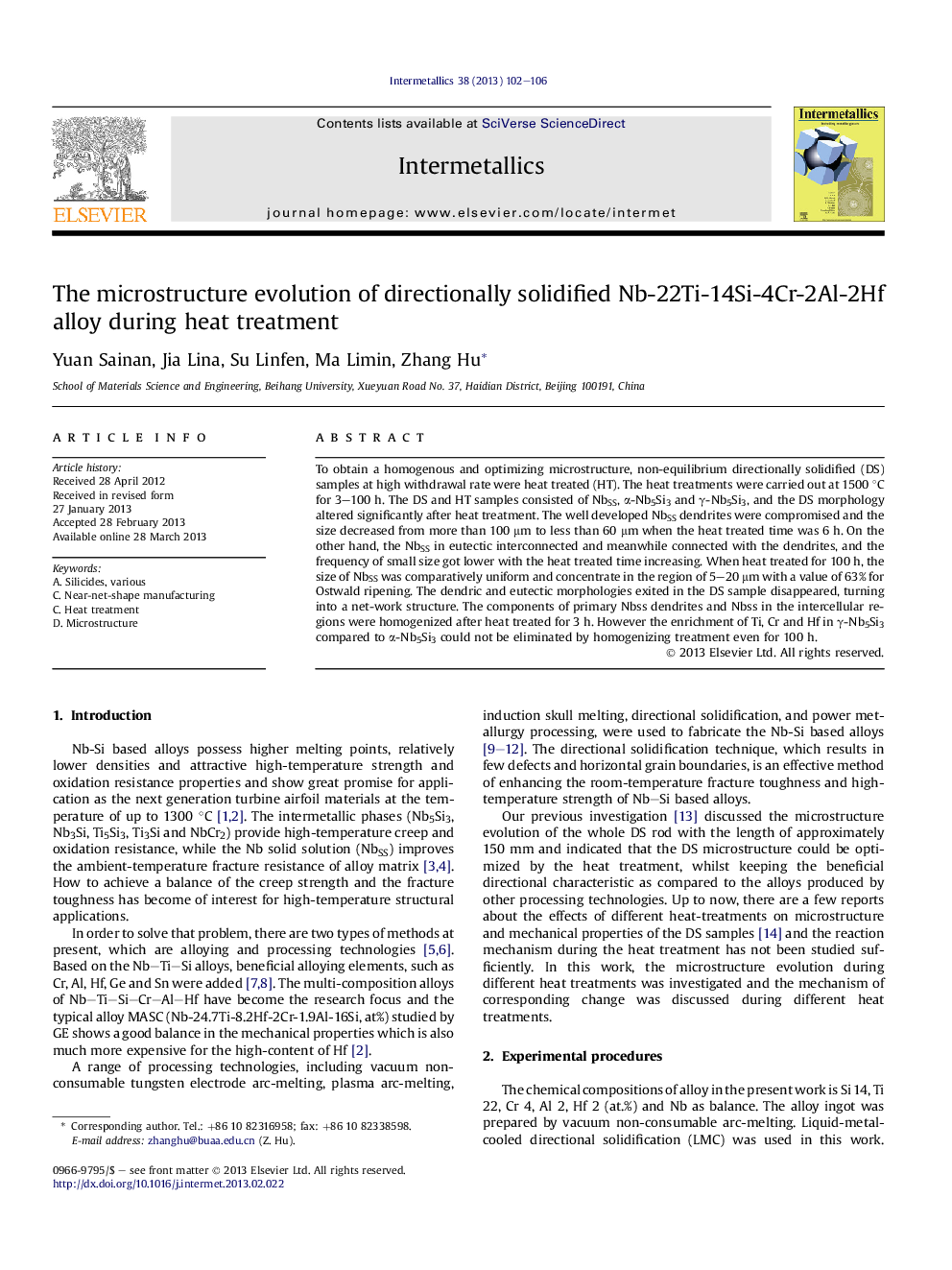| Article ID | Journal | Published Year | Pages | File Type |
|---|---|---|---|---|
| 1600334 | Intermetallics | 2013 | 5 Pages |
•The microstructure evolution of Nb-14Si-22Ti-4Cr-2Al-2Hf alloy (DS + HT).•A net-work structure obtained after heat treated at 1500 °C for 100 h.•The component change of γ-Nb5Si3 and α-Nb5Si3 during different heat treatments.
To obtain a homogenous and optimizing microstructure, non-equilibrium directionally solidified (DS) samples at high withdrawal rate were heat treated (HT). The heat treatments were carried out at 1500 °C for 3–100 h. The DS and HT samples consisted of NbSS, α-Nb5Si3 and γ-Nb5Si3, and the DS morphology altered significantly after heat treatment. The well developed NbSS dendrites were compromised and the size decreased from more than 100 μm to less than 60 μm when the heat treated time was 6 h. On the other hand, the NbSS in eutectic interconnected and meanwhile connected with the dendrites, and the frequency of small size got lower with the heat treated time increasing. When heat treated for 100 h, the size of NbSS was comparatively uniform and concentrate in the region of 5–20 μm with a value of 63% for Ostwald ripening. The dendric and eutectic morphologies exited in the DS sample disappeared, turning into a net-work structure. The components of primary Nbss dendrites and Nbss in the intercellular regions were homogenized after heat treated for 3 h. However the enrichment of Ti, Cr and Hf in γ-Nb5Si3 compared to α-Nb5Si3 could not be eliminated by homogenizing treatment even for 100 h.
